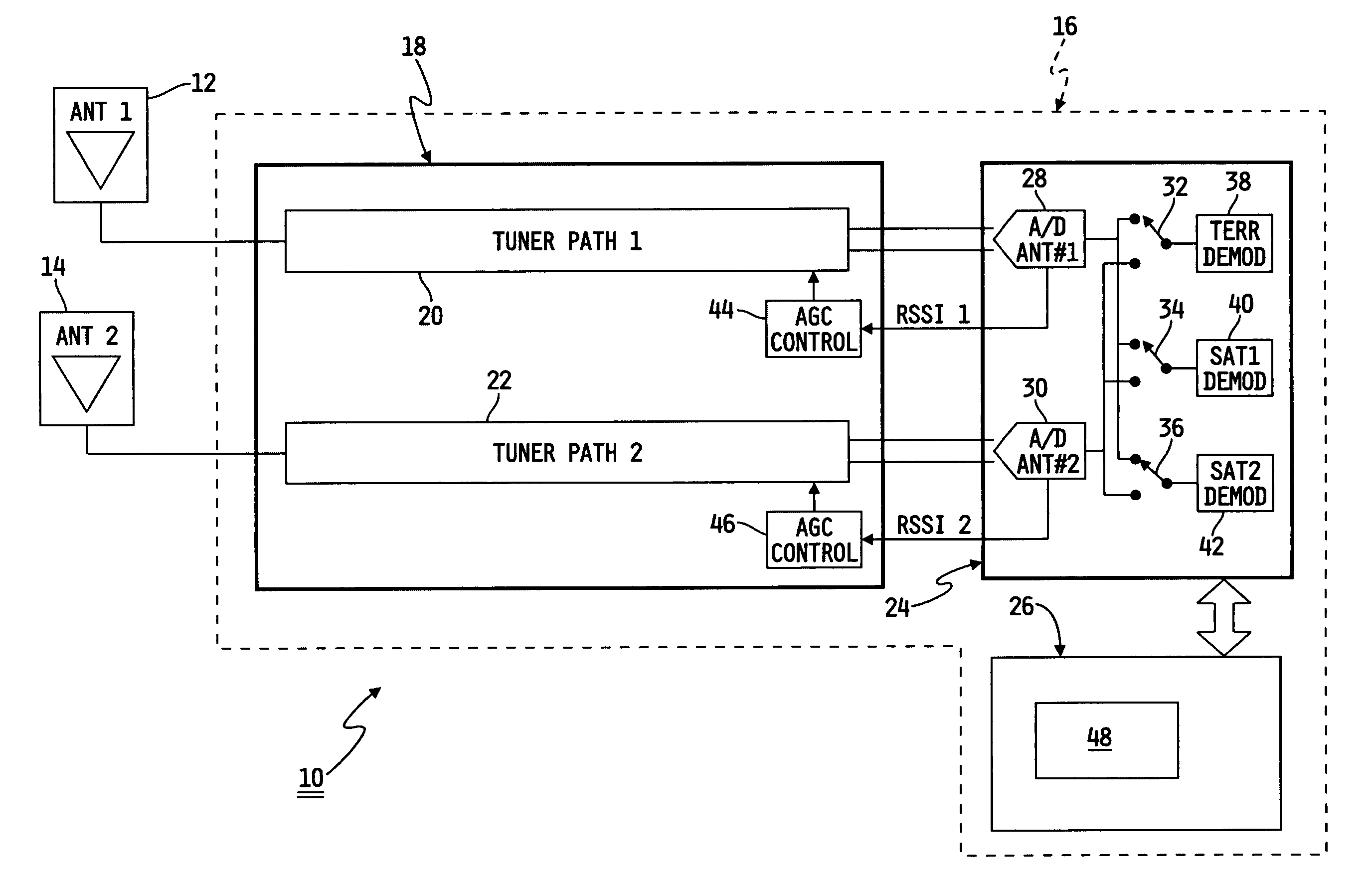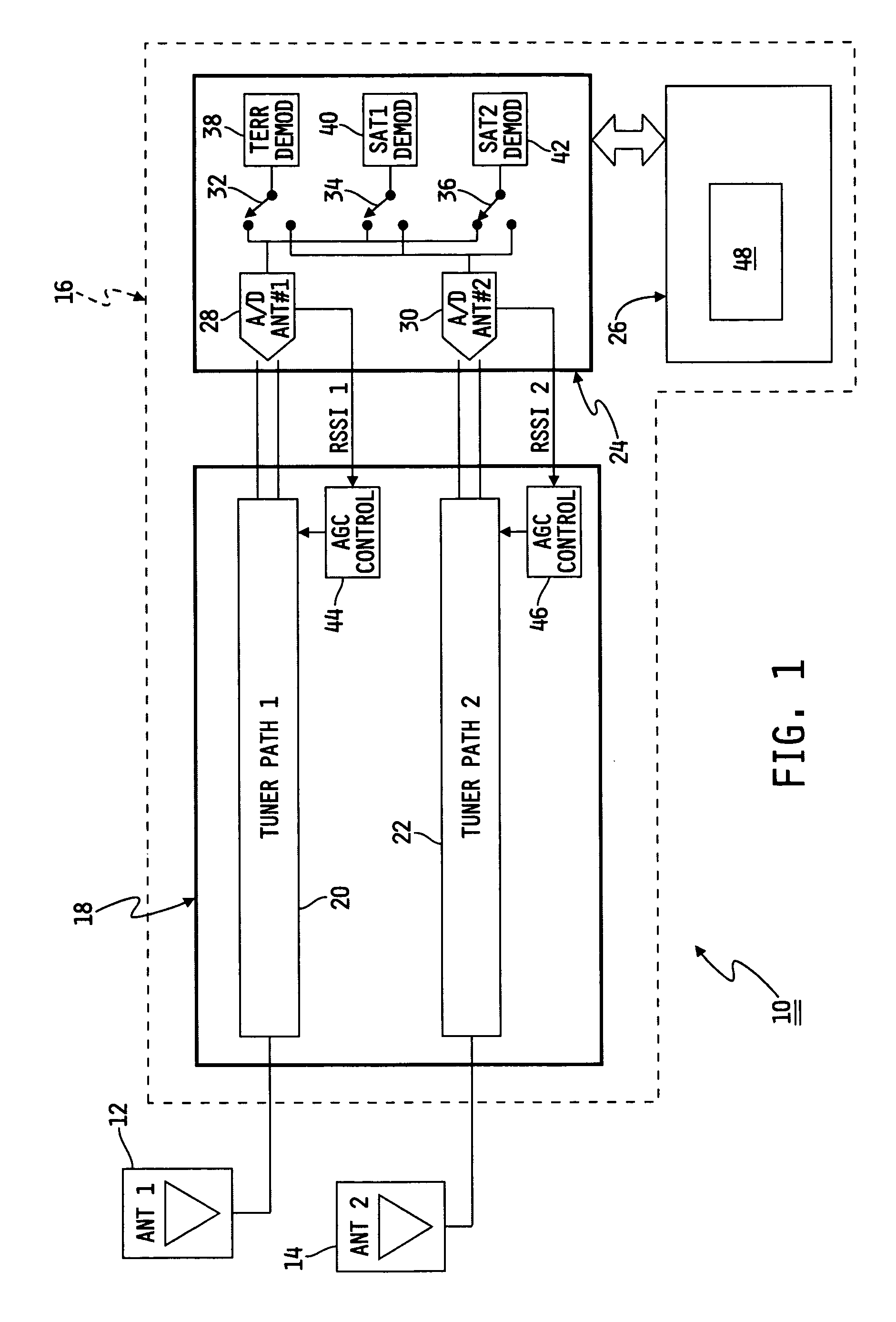Satellite receiver system
a satellite receiver and receiver technology, applied in the field of satellite receivers, can solve the problems of fading signal, adversely affecting the quality of received signals, and limited styling flexibility of vehicle manufacturers, so as to reduce the impact of fading and the possibility of reception mutes, eliminate aesthetic distractions, and increase styling flexibility
- Summary
- Abstract
- Description
- Claims
- Application Information
AI Technical Summary
Benefits of technology
Problems solved by technology
Method used
Image
Examples
first embodiment
[0019] an algorithm for controlling satellite signal selection is depicted in flowchart form in FIG. 2. In general, each satellite demodulator 40, 42 includes a QPSK Lock Status indicator (a high level demodulator status flag indicating adequate synchronization) that can be used as a trigger to determine which of antenna 12 or antenna 14 currently provides a superior signal. More specifically, the QPSK Lock Status indicator is a rapidly updated hardware output pin of baseband 24 that is provided to microprocessor 26 and indicates whether receiver 16 is locked onto the satellite signal. If a signal received by one of the antennae 12, 14 is not locked, then a reduced amount of usable information is received by that antenna 12, 14.
[0020] After the algorithm of FIG. 2 is initiated at block 50, microprocessor 26 commands SAT1 demodulator 40 to cause switch 34 to connect SAT1 demodulator 40 to one of the two switch inputs (i.e., one provided by A / D converter 28 or one provided by A / D conv...
third embodiment
[0042] Referring now to FIG. 12, a dual baseband system 400 is shown. As shown, system 400 includes an R / S blocks combining block 428 instead of either a frame combining block 228 or a payload packet combining block 328. R / S blocks combining block 428 is coupled to each R / S decoder 214, 224 and provides an output to payload packet demux 216. In this embodiment, the smallest block of usable data (i.e., R / S blocks of 255 bytes of information) are used for comparison and to construct the resulting signal. Instead of comparing payload packets as in system 300, which each include two R / S blocks, both of which are discarded for the unselected payload packet, system 400 compares bitstreams on a R / S block-by-R / S block basis, and discards only the corrupt R / S blocks. Additionally, system 400 avoids the delay associated with the additional processing of payload packet demuxs 216, 226.
[0043] Referring now to FIGS. 13A and 13B, yet another single baseband embodiment of an algorithm for controll...
PUM
 Login to View More
Login to View More Abstract
Description
Claims
Application Information
 Login to View More
Login to View More - R&D
- Intellectual Property
- Life Sciences
- Materials
- Tech Scout
- Unparalleled Data Quality
- Higher Quality Content
- 60% Fewer Hallucinations
Browse by: Latest US Patents, China's latest patents, Technical Efficacy Thesaurus, Application Domain, Technology Topic, Popular Technical Reports.
© 2025 PatSnap. All rights reserved.Legal|Privacy policy|Modern Slavery Act Transparency Statement|Sitemap|About US| Contact US: help@patsnap.com



